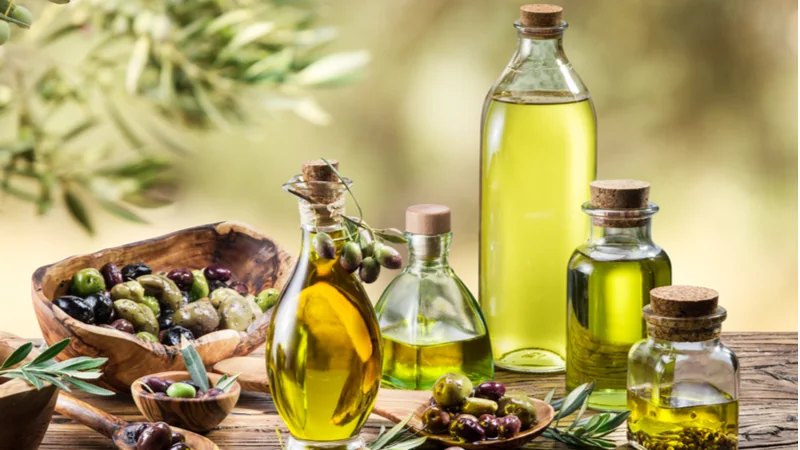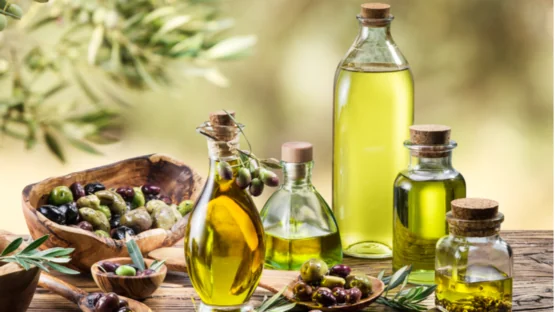Scientists have shown that oleanoic acid, a nutrient most associated with olive oil, greatly improves numerous markers of cardiac health in aging mice [1].
is a nutrient abundant in some foods, particularly olive oil. Olive oil has been shown to have health benefits compared to most other types of oil, but this data comes mostly from population studies that can establish a connection but do not provide a mechanistic explanation for it. To do this, a scientific deep dive is needed, and some have already been done.
The researchers of this study point out that oleanoic acid has been shown to possess antiviral, hepatoprotective, anti-cancer, anti-diabetic, and neuroprotective properties. At least in part, it works by countering oxidative stress, a major factor in various processes of aging, such as inflammaging and mitochondrial dysfunction.
The heart of the matter
In this study, the researchers wanted to analyze the beneficial effects of oleanoic acid on heart function using 4- to 6-month-old and 22- to 24-month-old mice. In this placebo-controlled study, the treatment groups received oleanoic acid every other day for six weeks.
As expected, the passage of time induced various pathological changes in the animals’ hearts. With aging, the heart gets larger, mostly because of age-related hypertension. The treatment attenuated age-related heart hypertrophy, though the researchers do not report whether it actually lowered blood pressure.
The part of the heart that grows the most with aging is the left ventricle. The treatment led to a substantial decline in its mass and its diameter at the end of the contraction phase.
Considerable improvement in cardiac function was recorded as well. To perform as expected, heart muscle cells (cardiomyocytes) must be able to shorten quickly and substantially. The treatment improved several important markers, such as peak shortening (as a percentage of the resting cell length), maximal velocity of shortening/relengthening, and relengthening duration. More concretely, aging worsened peak shortening by a factor of two, yet oleanoic acid was able to restore this parameter, as well as the others, virtually to youthful levels.
On the tissue level, aging is accompanied by cardiomyocyte remodeling and a drastic increase in fibrosis. The latter was just as drastically reversed by oleanoic acid, again almost to the levels observed in young mice.
Autophagy and mitophagy
Autophagy is an important maintenance mechanism that dismantles and clears out dysfunctional organelles, toxic proteins, etc. This process gets sluggish as we age, and that includes mitophagy, the type of autophagy that targets dysfunctional mitochondria. This decrease in autophagic activity has been implicated in many age-related diseases and conditions, such as cancer and neurodegeneration [2].
Since autophagy and oxidative stress are linked together in an intricate interplay [3], the researchers decided to check the behavior of several autophagic and mitophagic markers.
The autophagic markers LC3-II and p62 revealed an age-related decrease in autophagy that was mostly reversed by the treatment. Of the three mitophagic markers, only one, called FUNC1, was significantly upregulated by oleanoic acid in aged mice.
To further investigate this marker’s role, scientists created mice with the FUNC1 gene knocked out. In those mice, the effects of aging on cardiac function were of the same magnitude as in wild-type mice, but the treatment failed to alleviate them, pointing at the importance of the FUNC1 pathway for oleanoic acid’s effect on cardiac function.
Superoxide (O2–) is the primary free radical produced by mitochondria, and its destructive power is well captured by study titles such as “A mitochondrial superoxide theory for oxidative stress diseases and aging” [4]. The researchers found that oleanoic acid reverted the levels of superoxide back to normal.
Finally, the researchers tested for several inflammation markers, including the primary pro-inflammatory cytokines TNF-α and IL-1ß. In line with the other markers, those two became upregulated with age but were rolled back by the treatment.
Is olive oil actually healthy?
As mentioned above, olive oil is indeed considered a healthy alternative to other oils, but its properties are probably not the same as those of pure oleanoic acid. Moreover, although oleanoic acid is thought to be relatively safe, one study showed that it reduces motility and fertility in rats, so more research should be done on safety and dosage.
Conclusion
In line with what we know about the benefits of olive oil and other oleanoic acid-containing products, this study shows that oleanoic acid can potentially protect against age-related cardiac deficiencies, probably by promoting autophagy and mitophagy. It is intriguing and hope-inspiring that this relatively short-term and late-onset treatment was able to revert so many markers back to youthful levels.
Literature
[1] Gong, Y., Luo, Y., Liu, S., Ma, J., Liu, F., Fang, Y., … & Ren, J. (2022). Pentacyclic triterpene oleanolic acid protects against cardiac aging through regulation of mitophagy and mitochondrial integrity. Biochimica et Biophysica Acta (BBA)-Molecular Basis of Disease, 166402.
[2] Barbosa, M. C., Grosso, R. A., & Fader, C. M. (2019). Hallmarks of aging: an autophagic perspective. Frontiers in endocrinology, 790.
[3] Chang, K. C., Liu, P. F., Chang, C. H., Lin, Y. C., Chen, Y. J., & Shu, C. W. (2022). The interplay of autophagy and oxidative stress in the pathogenesis and therapy of retinal degenerative diseases. Cell & Bioscience, 12(1), 1-20.
[4] Indo, H. P., Yen, H. C., Nakanishi, I., Matsumoto, K. I., Tamura, M., Nagano, Y., … & Majima, H. J. (2015). A mitochondrial superoxide theory for oxidative stress diseases and aging. Journal of clinical biochemistry and nutrition, 56(1), 1-7.





